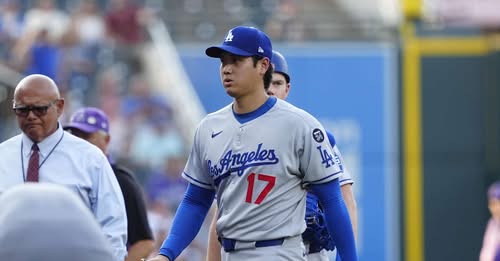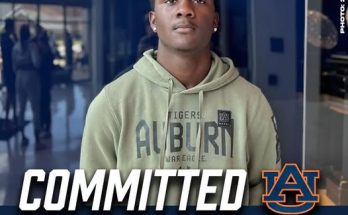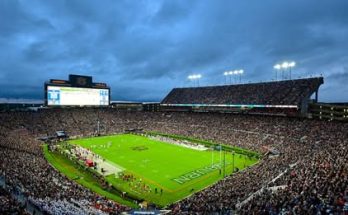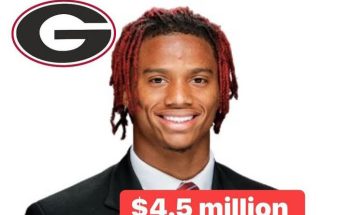Shohei Ohtani getting hit by a comebacker has to be the worst-case scenario for the Los Angeles Dodgers, and the sight of it sent shockwaves not only through the dugout but throughout all of Los Angeles. The moment the ball struck him, there was an immediate, collective pause that felt heavier than anything that could happen in the middle of a long regular season. Every fan watching, whether in the stadium or on television, instinctively knew the magnitude of what just happened. Ohtani is not just another star player; he is the centerpiece of the Dodgers’ present and future, a once-in-a-century talent whose health directly dictates the ceiling of this franchise. To see him vulnerable, grimacing in pain, instantly shifted the emotions from excitement about the season to sheer dread. In that instant, Los Angeles collectively held its breath.
The Dodgers knew exactly what they were getting when they signed Ohtani to his historic contract. They weren’t just investing in a player who can pitch and hit; they were investing in the face of baseball, a player who transcends the sport and bridges cultures in a way no one else in Major League Baseball does right now. Ohtani brings with him not only power at the plate and dominance on the mound, but also international attention, merchandising revenue, and a sense of awe that very few athletes in any sport can command. When a player of that stature takes a comebacker to the body, the ramifications go far beyond the scoreboard. It’s about the investment, the season, and the very identity of a team that has built its current narrative around him.
The sound of the ball connecting with flesh instead of glove or bat creates a particular kind of silence in a stadium. Fans know instinctively that something is wrong. For Dodgers fans, it was almost an out-of-body moment. This wasn’t supposed to happen—not to Ohtani, not in this season where everything seemed to be aligning for the franchise to make a deep run. The Dodgers built their roster in such a way that Ohtani wasn’t just a part of the plan; he was the plan. They envisioned him as the centerpiece of a modern baseball dynasty. A single pitch changing that trajectory feels almost cruel.
The psychology of the fan base is worth examining in these moments. When Ohtani was hit, Dodgers fans were forced to confront the fragility of sports and the unpredictability of fate. There’s an almost superstitious quality to the way people react in moments like this, with many instinctively fearing the worst before there’s even an update. That is the power of a generational player—his presence or absence changes everything. A routine out is one thing, but a ball that ricochets off a superstar is something entirely different. It becomes an event, not just a play. The ripple effects stretch from the dugout to the owner’s box to every corner of the baseball world.
From the Dodgers’ perspective, the moment Ohtani went down was a chilling reminder of how fragile success is in Major League Baseball. The team has one of the deepest rosters in the game, but there is no replacing Ohtani. Even if they could piece together his production through a combination of other players, the aura and pressure he takes off his teammates can’t be replicated. Ohtani being in the lineup means Mookie Betts and Freddie Freeman don’t have to carry the load by themselves. It means pitchers approach the lineup differently. It means opposing managers have to manage differently. Removing him from the equation, even temporarily, fundamentally shifts the balance of power not only in the Dodgers’ lineup but across the entire National League.
The worst-case scenario isn’t just losing Ohtani for a few games; it’s the specter of a lingering injury. Baseball history is filled with examples of freak accidents or unlucky plays that derail otherwise promising seasons. The Dodgers can ill afford to be another entry in that book. Every time Ohtani steps onto the field, fans expect brilliance. But brilliance requires health, and health is never guaranteed. The thought of losing him—even for a short time—feels catastrophic because of how much he means to the team’s overall design. His presence in the lineup ensures constant pressure on opposing pitchers, and his ability to hit for power and average makes him indispensable. Even if his pitching is limited while recovering from previous injuries, his bat alone is enough to make the Dodgers a juggernaut. Without it, that juggernaut suddenly feels mortal.
The human side of this moment also shouldn’t be overlooked. Ohtani is not just an athlete; he’s a competitor who has built his career on defying limits. He has endured grueling rehab processes, pitched through pain, and carried the weight of expectations from two nations on his shoulders. To be struck by a comebacker is not the result of poor preparation or a lack of skill. It’s simply bad luck, the kind of cruel twist that can happen at any moment in baseball. For someone like Ohtani, who has worked tirelessly to stay on the field, the frustration of being sidelined—even briefly—must feel enormous. The way he handles adversity has always been part of his story, but no one in Los Angeles wants him to have to add another chapter to that saga this season.
As the stadium held its breath, one could almost sense the larger narrative forming. Analysts, fans, and rivals alike began to think about the implications. If Ohtani were seriously injured, it wouldn’t just affect the Dodgers; it would alter the shape of the playoff race, the MVP conversation, and perhaps even the television ratings that MLB counts on for its biggest draws. That’s how much one player can matter. His health is not just a team issue but a league-wide concern. Baseball is better when Ohtani is playing, and the absence of his presence would leave a void that can’t be filled.
The Dodgers’ front office likely experienced a different kind of shockwave. They committed a record-breaking financial investment to secure Ohtani’s services. That investment was made not just for today but for years down the line. Every pitch he sees, every swing he takes, carries the weight of that contract and the expectations attached to it. A freak accident threatens not just the current season but the calculus of how the team manages him moving forward. Do they become more cautious? Do they attempt to protect him in ways that limit his two-way abilities? These are the kinds of uncomfortable questions a team doesn’t want to face but must when its most valuable player suffers a scare.
The emotional weight of this moment also reached his teammates. Baseball clubhouses are tight-knit environments, and players know better than anyone how much Ohtani means to their chances. When he’s in the lineup, there’s a confidence that permeates the roster. When he goes down, that confidence can be shaken. Teammates likely felt a pit in their stomachs watching him take that comebacker, knowing they may have to adjust quickly to a new reality. In professional sports, adaptation is necessary, but certain losses hit harder than others. Losing Ohtani, even temporarily, is one of those losses.
Fans often wrestle with a paradox in these moments. On one hand, they desperately hope for good news—that Ohtani will shake it off, that the tests will come back negative, that he’ll be back in the lineup before long. On the other hand, they also fear that optimism is naive, that injuries don’t always reveal their full extent immediately. That fear lingers until an official update arrives. It’s a helpless feeling, one that reinforces just how invested fans are in their stars. For Dodgers fans, the idea of losing Ohtani—even in theory—is almost too painful to imagine.
The ripple effect also stretches to the media, who instantly turn a single play into a storyline that dominates headlines. Every angle is analyzed: the speed of the comebacker, the exact spot where it hit, his reaction, the trainer’s response, and the body language of everyone in the dugout. That is the reality of being a superstar—your every moment becomes magnified, and your injuries become national news. This attention reflects how deeply fans care, but it also adds pressure to an already stressful situation.
Ultimately, the significance of Ohtani being hit by a comebacker lies in what it represents. It is a reminder that even the most gifted athletes are vulnerable, that all the preparation and skill in the world cannot eliminate the risk of bad luck. For the Dodgers, it underscores the precarious nature of their pursuit of greatness. For fans, it highlights the fragility of hope. And for baseball as a whole, it reinforces just how much one player can mean to an entire sport.
The aftermath of the moment will be telling. If Ohtani emerges relatively unscathed, the incident will become a footnote, a scare that united a city in a moment of collective panic before allowing it to exhale. If the injury lingers, however, it will be remembered as a turning point, the moment when everything changed for a team and its fan base. Either way, the sight of him being struck served as a powerful reminder of why sports can be so exhilarating and terrifying at the same time. Greatness always walks hand in hand with risk, and when that risk comes to life, the weight of it can be overwhelming.
In Los Angeles, Ohtani represents more than just home runs and strikeouts. He represents possibility, dominance, and the belief that this era of Dodgers baseball could be historic. A single comebacker threatened to take that away, and in the silence that followed, the city was reminded of how fragile those dreams are. For a few agonizing moments, the Dodgers and their fans lived their worst-case scenario, and the memory of holding their breath will linger long after the results are known.



